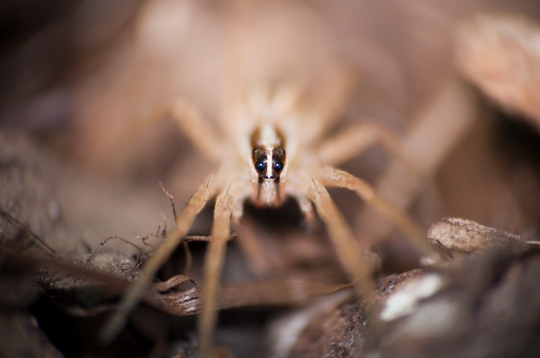If I spend any amount of time in the garden, I soon discover some sort of creeping, crawling creature. Since I was a little boy, I’ve been fascinated with bugs and insects. I would often turn over the large, landscaping rocks in my mother’s flower beds to discovery what lurked underneath. When my brother and I would trek through the woods, I spent a good amount of time looking for new bugs, turning over limbs and even breaking apart rotting logs to find them. Most of these bugs aren’t harmful to my garden plants at all, but serve a purpose in the complex web of life. Take the green stink bug, for example.
(click photos to view larger images)
This little nymph was discovered hanging onto the Whirling Butterfly gaura. It wasn’t causing any damage, seemingly content just to “hang out”. I picked it up and handled it for some time, and luckily it didn’t spray me with its characteristically bad-smelling chemical. Perhaps it hasn’t matured enough yet. At this size, I’m sure this bug provides a good snack for the green anoles or perhaps a member of the spider family.
Lurking nearby, I found this little striped wolf spider. This species can grow quite large and love to terrorize my wife and daughter by their mere presence. Whenever they show up in unexpected places, they are met by a scream and usually an, “Oh my God! JOE!” That’s code for, “There’s a large, ugly bug that you need to get rid of!” Most of the time, I enter the room to find a small, frightened little spider, which I quickly scoop up in my hands and transfer outside. Although wolf spiders are known to bite humans, I’ve never had one that I’ve handled do so. I’m always careful to hold them loosely, though.
Spiders are fascinating! We used to have a good number of garden spiders when I was growing up. I would literally spend an afternoon hunting grasshoppers, crickets and moths to throw into their large webs. I loved to watch this particular spider move with lightning speed to the struggling insect and begin wrapping it in a thick strand of silk that streamed from the spider’s abdomen. The insect would struggle for awhile, but once it was completely wrapped, the spider would move in for its paralyzing bite, then all movement would stop. I think the spider appreciated my help, but it made no qualms about telling me when I got too close. It would run to the center of the web and begin bouncing the entire web back and forth violently to warn me to stay away!
The wolf spider is much different from the garden spider, however. Instead of weaving a web, it hunts its prey freely. This particular spider was found in the foliage of some flowers, no doubt waiting for an insect to come and dine on nectar – quite possibly its last meal. I’ve seen wolf spiders dragging their meals with them as they go, a difficult task when the prey is equal to or larger in size than the spider itself.
Because spiders prey upon a variety of insect pests, I consider them beneficial insects in my garden AND my home. I’ll have to add this one to my Beneficial Insect Files.






Comments on: "Thinking Small" (1)
Joseph, Your spider portrait is truly extraordinary!!! Wow! Fabulous! One must click on the picture. They are beneficial I know, but still I do feel a bit off by their presence.